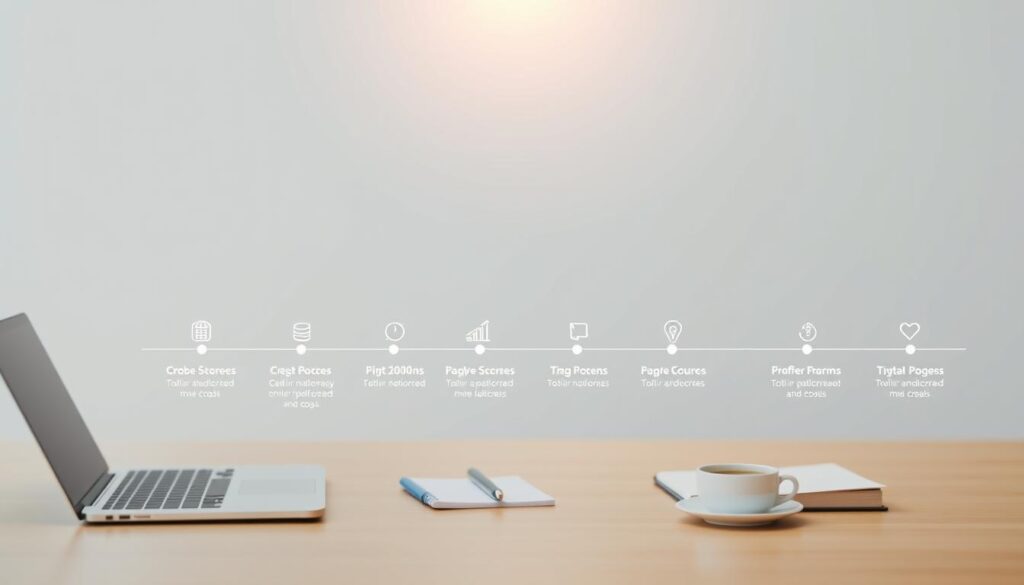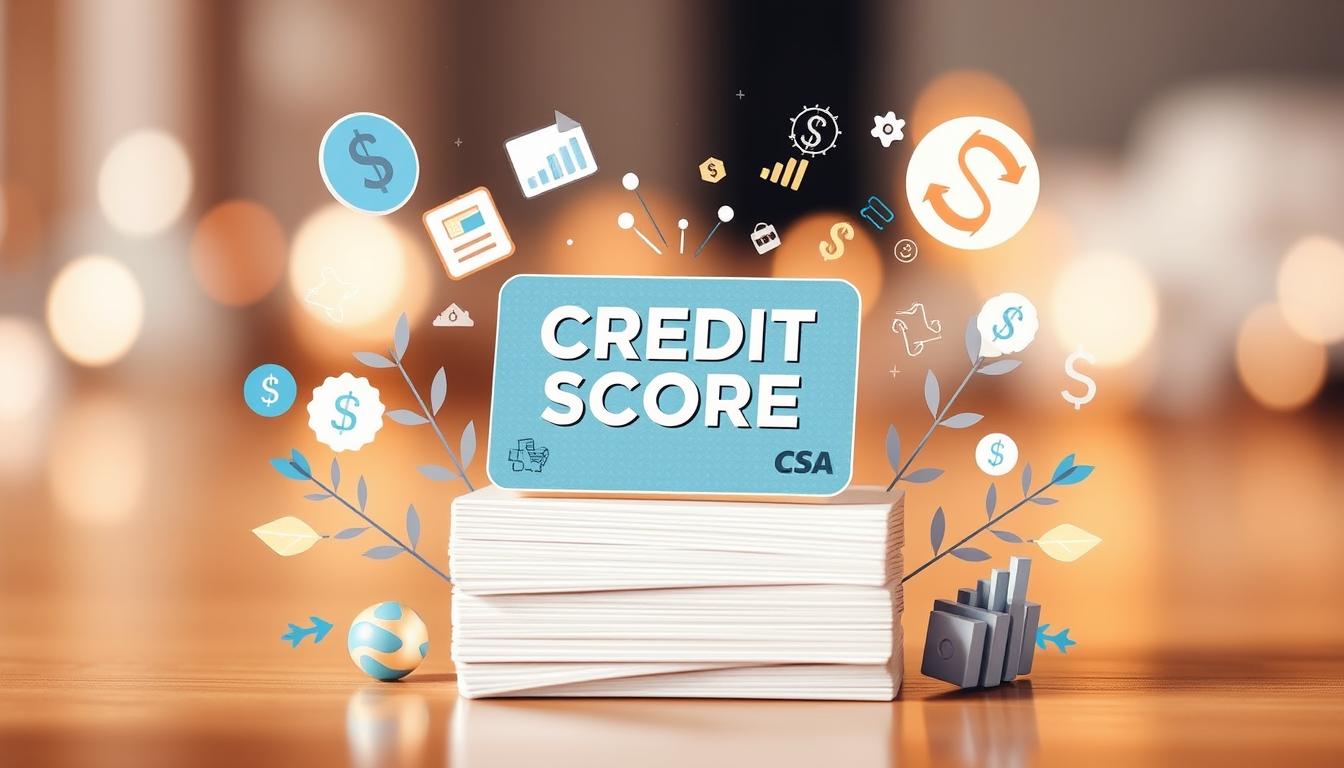Ever felt like your credit score was keeping you from buying a car, renting an apartment, or even landing a job? You’re not alone. Many of us have faced the stress of seeing “fair” or “poor” scores pop up when we need them most. But what if we told you fast credit repair is within reach?
Credit score improvement doesn’t have to take years—or cost a fortune. This guide breaks down how to improve your credit score fast using strategies used by financial experts. Whether you’re aiming for a mortgage, a lower interest rate, or just peace of mind, we’ll show you actionable steps that deliver results in weeks, not months.
Contents
- 1 Understanding Credit Scores and Why They Matter
- 2 How to Improve Your Credit Score Fast: Proven Strategies
- 3 Pay Down Credit Card Balances for Immediate Impact
- 4 Negotiate with Creditors About Negative Marks
- 5 Become an Authorized User on a Healthy Account
- 6 Diversify Your Credit Mix for Better Scores
- 7 Common Credit Score Myths to Avoid
- 8 Timeline: When to Expect Results from Your Efforts
- 9 Conclusion: Your Path to Better Credit Starts Today
- 10 FAQ
- 10.1 How can I quickly improve my credit score?
- 10.2 What factors are considered in my credit score?
- 10.3 What does it mean to have a good credit score?
- 10.4 How long does it take to see improvements after paying down debt?
- 10.5 What should I include in a goodwill letter to my creditor?
- 10.6 When is it wise to seek professional credit repair services?
- 10.7 What are the benefits of being an authorized user on someone else’s credit account?
- 10.8 Is it safe to use credit builder loans or secured credit cards?
- 10.9 What should I avoid when trying to boost my credit score?
- 10.10 How often should I check my credit score?
Key Takeaways
- Small, consistent steps can boost your score in 30-60 days.
- Learn which habits to change today for faster results.
- Discover legal, proven methods—not risky “quick fixes.”
- Track progress with free tools and expert-backed advice.
- Turn “fair” into “good” or “excellent” with practical strategies.
Understanding Credit Scores and Why They Matter
Your credit score is more than just a number. It shapes your financial future. Let’s break down how it works and why it matters.
What Makes Up Your Credit Score?
Lenders use FICO score factors to evaluate risk. Here’s how they add up:
- Payment History (35%): On-time payments build trust.
- Credit Utilization (30%): Keep balances low compared to credit limits.
- Length of Credit History (15%): Older accounts show reliability.
- New Credit (10%): Too many applications can lower your score.
- Credit Mix (10%: A mix of loans and credit cards helps.
Why a Good Credit Score Is Essential
A high score unlocks better terms on loans, mortgages, and credit cards. Landlords and employers sometimes check scores too. For example, a 720+ score can save you $10,000+ on a $200,000 mortgage compared to a 620 score.
The Different Credit Score Ranges Explained
| Score Range | Rating | What It Means |
|---|---|---|
| 300–579 | Poor | Hard to qualify for loans |
| 580–669 | Fair | Limited options, higher rates |
| 670–739 | Good | Access to competitive rates |
| 740–799 | Very Good | Prime borrowing conditions |
| 800–850 | Excellent | Best terms and offers |
These credit score ranges are calculated by credit reporting agencies like Equifax, Experian, and TransUnion. Each agency uses similar scales but may have slight variations.
How to Improve Your Credit Score Fast: Proven Strategies
Fast credit repair starts with simple steps. These methods can raise your score in weeks, not years. Learn how to track your progress and stay on track.
The Fastest Ways to See Credit Score Improvement
- Reduce credit card balances to under 30% of your limit—this alone can add 10–30 points.
- Dispute errors on your report; corrected items often update within 30 days.
- Become an authorized user on a trusted account to add positive payment history.
Setting Realistic Expectations for Credit Repair
| Time Frame | Expected Outcomes |
|---|---|
| 30 Days | Quick fixes like error removal may add 50+ points |
| 3 Months | Consistent payments start showing in credit score improvement |
| 6+ Months | Major improvements for severe credit damage |
Monitoring Your Progress Effectively
Use credit monitoring tools like Credit Karma or your bank’s app to check progress. Set alerts for score changes and review reports monthly. Avoid checking too often to prevent dings.
Pay Down Credit Card Balances for Immediate Impact
Lowering your credit utilization ratio is a quick way to boost your score. Your revolving credit balances make up 30% of your FICO score. Try to keep these balances under 30%, ideally 10% or less, for the best results.
Even small decreases can increase your score by 20–40 points in just a month.
- Snowball method: Start with the smallest debts for quick wins.
- Avalanche method: Tackle high-interest cards first to save money.
- Double payments: Pay early to reduce what’s reported on your statement.
Ask your credit card company to raise your limit. This can lower your utilization without you spending more. But, be careful with balance transfers. Opening new accounts can temporarily lower your score.
Make consistent, small payments to keep your balances low. This shows lenders you’re responsible with your credit.
Check your progress every month. Every dollar you pay down counts. Start now and watch your score improve!
Negotiate with Creditors About Negative Marks
Dealing with late payments or collections doesn’t have to be final. Creditors sometimes remove negative marks through negotiation. Start by identifying which items are negotiable. Late payments under two years or small collections often have flexibility. Bankruptcies or foreclosures require more effort but aren’t impossible to address.
How to Draft an Effective Goodwill Letter
Goodwill letters explain circumstances like emergencies causing missed payments. Use polite, concise language. Here’s a template:
“Dear [Creditor], I’m writing to request removal of a [specific item] from my account. Life challenges temporarily impacted my ability to pay, but I’ve since stabilized financially. I’d appreciate your consideration of this request to improve my credit standing.”
Include account details and reference past on-time payments to strengthen the case.
Credit Negotiation Tactics to Know
- Request removal in writing, citing errors or hardship
- Ask for “pay for delete agreements” where settling debts erases negative notes
- Track all communications for follow-up
When to Seek Help
Professional credit repair firms charge $79–129/month. Legitimate services focus on dispute processes, not guarantees. Avoid scams promising “instant fixes” or upfront fees.
Real-World Successes
- A 60-day late mortgage payment erased after showing five years of perfect history
- Medical debt collection dropped after submitting insurance payment proof
- A student loan late fee removed during documented unemployment
Negotiations take time but can boost scores quickly if successful. Always keep records and stay respectful during discussions.
Become an Authorized User on a Healthy Account
Becoming an authorized user lets you use someone else’s good credit history. This way, you can quickly improve your credit score. Sometimes, scores can jump by 30+ points without you using the card.
- Choose accounts with 7+ years of perfect payments
- Look for balances under 30% of credit limits
- Confirm the primary holder reports to all 3 bureaus
But, be careful. If the main user misses payments, your score could fall. Don’t use paid services for tradeline boosting. They might be risky and involve unknown accounts. It’s safer to ask a trusted friend or family member.
Big banks like Chase, American Express, and Citibank always report authorized user activity. But, Capital One and Discover might not. Always check with them first. Make sure you understand the agreement to avoid any surprises. This method works best when based on trust and clear communication.
Diversify Your Credit Mix for Better Scores
Your credit mix is 10% of your FICO score. Adding different account types shows lenders you’re good with money. Start by learning what options you have.
Types of Credit That Boost Your Score
Lenders like borrowers who handle many credit types. Installment loans vs revolving accounts show different skills:
- Revolving credit: Credit cards where you repay varying amounts monthly
- Installment loans: Auto loans or mortgages with fixed payments
- Service credit (utility bills paid on time)

“A healthy credit portfolio blends accounts to show adaptability in managing debt,” says credit expert Linda Morgan of the National Foundation for Credit Counseling.
Strategic Applications for New Credit
Grow your credit portfolio building wisely:
- Start with a secured credit card if you’re rebuilding
- Consider a credit-builder loan from local credit unions
- Apply only when necessary to avoid multiple hard inquiries
Building a Balanced Credit Portfolio
Follow these steps for steady progress:
- Add one new account type every 6-12 months
- Keep older accounts open to maintain credit age
- Use no more than 30% of credit limits on revolving accounts
Patience is key. Even small steps like adding a car loan or keeping a phone bill in good standing can strengthen your credit profile over time.
Common Credit Score Myths to Avoid
Sorting through credit repair myths and credit score misconceptions is key to avoiding costly mistakes. Many believe closing old accounts boosts their score, but this can backfire by reducing available credit and raising utilization rates. Others think carrying a balance improves creditworthiness—this is a myth. Let’s clear the confusion.
Dangerous “Quick Fix” Strategies That Backfire
- Closing old accounts: This shortens your credit history and may lower your score.
- Multiple applications for discounts: Each new credit check adds a hard inquiry, temporarily lowering your score.
- Ignoring errors: Failing to dispute legitimate inaccuracies can keep your score artificially low.
Legal vs. Illegal Credit Repair Tactics
| Legal Tactics | Illegal Tactics |
|---|---|
| Disputing factual errors in reports | Falsifying identity (e.g., using a fake SSN) |
| Negotiating payment plans with lenders | Claiming you’re legally allowed to delete accurate negative info |
| Working with FTC-certified credit counselors | Offering upfront payments for “guaranteed” score boosts |
Steer clear of illegal credit repair schemes promising instant fixes. Tactics like creating a “credit privacy number” or altering personal info violate the Credit Repair Organizations Act. Stick to proven methods like monitoring reports and addressing inaccuracies ethically. Knowledge cuts through confusion—avoiding myths builds a stronger financial future.
Timeline: When to Expect Results from Your Efforts
Improving your credit score needs a clear credit repair timeline. Here are realistic goals based on credit score improvement timeframe benchmarks:

- 30 days: Paying down balances and becoming an authorized user can boost scores 10–30 points. Credit bureaus update quickly for payment and utilization changes.
- 60–90 days: Dispute resolution and goodwill adjustments may add 20–50 points. Errors removed here speed up progress.
- 6 months: Consistent on-time payments and debt reduction can raise scores 50–100 points. Rapid credit building requires discipline here.
- 1–2 years: Severe issues like late payments or collections fade in impact. Scores recover 50–150+ points over time.
Starting scores matter too. For example, lowering credit utilization from 90% to 30% might give 40 points to fair-credit users but only 15 to those with good scores. Even old negative marks lose their sting gradually—even before they drop off at 7–10 years.
“Credit rebuilding isn’t a sprint—it’s a marathon. Celebrate small wins along the way.”
Track progress monthly using free tools. Stay focused: every step forward counts, even if results take time. Patience and persistence pay off in the long run.
Conclusion: Your Path to Better Credit Starts Today
Your journey to a better credit score begins today. Every step you take brings you closer to a stronger financial future. Whether it’s tackling high balances, negotiating old debts, or adding new credit accounts, each choice matters.
Small actions like lowering credit card usage or becoming an authorized user can lead to quick changes. Consistent habits like making on-time payments build a solid foundation for lasting progress.
Start by checking your credit reports at annualcreditreport.com to find errors or opportunities. Choose one step from this guide, like writing a goodwill letter or setting up automatic payments, and do it this week. Make it a habit to check your score monthly and adjust your plan as needed.
Building credit is more than today’s score; it’s planning for your financial future. A better credit score means lower interest rates, easier loan approvals, and peace of mind. Every decision you make now moves you closer to your goals, like owning a home or starting a business.
Remember, building credit is your story to tell. The first page is today. Start small, stay patient, and keep moving forward.
FAQ
How can I quickly improve my credit score?
What factors are considered in my credit score?
What does it mean to have a good credit score?
How long does it take to see improvements after paying down debt?
What should I include in a goodwill letter to my creditor?
When is it wise to seek professional credit repair services?
Is it safe to use credit builder loans or secured credit cards?
What should I avoid when trying to boost my credit score?
How often should I check my credit score?

Joe Wright is a finance expert, blogger, and author from New York. He recently graduated in finance and writes about loans, credit cards, and money management. Joe helps people understand finance and make smart financial decisions.

